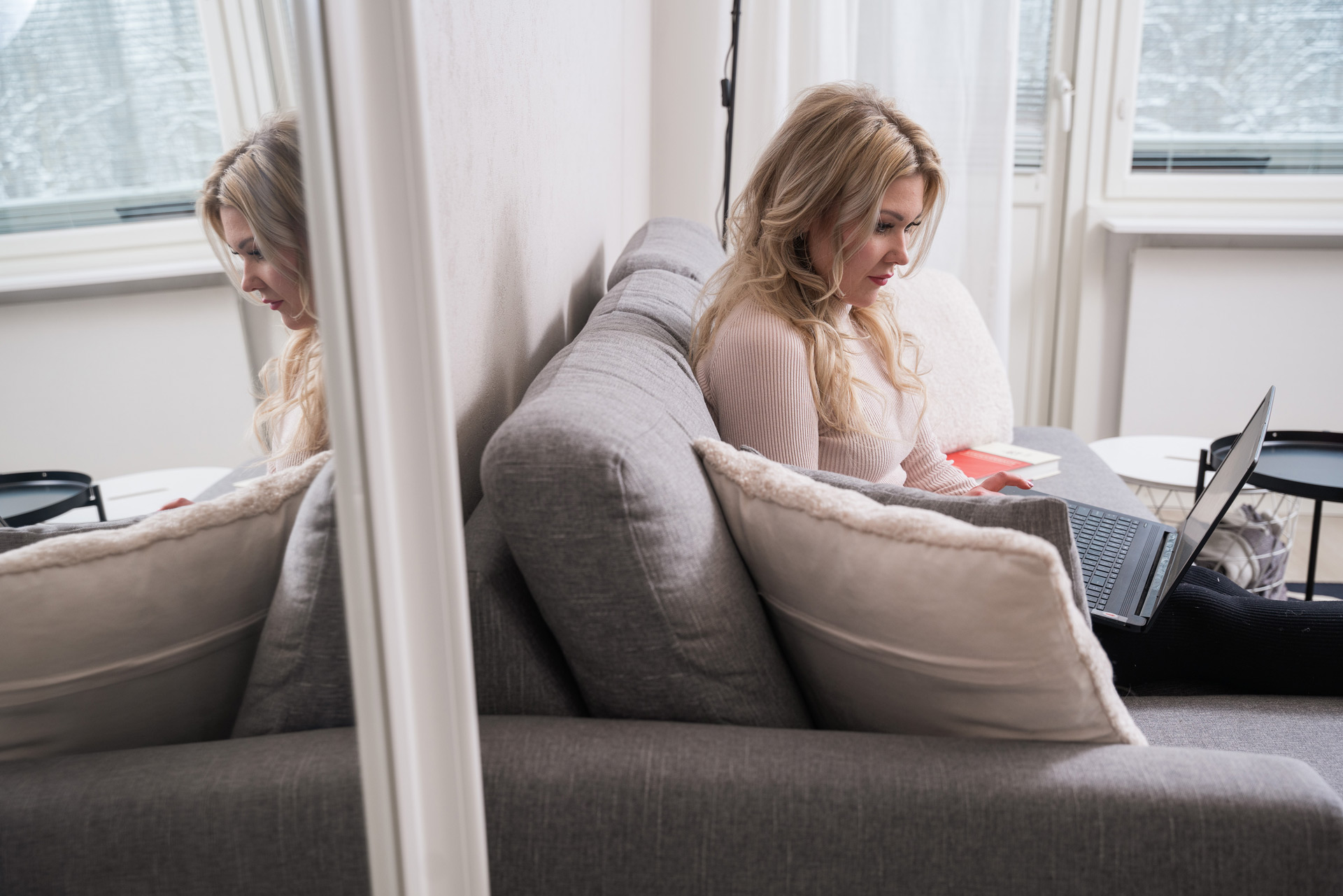
Savonia Article Pro: Remote work: Friend or foe?
Savonia Article Pro is a collection of multidisciplinary Savonia expertise on various topics.
This work is licensed under CC BY-SA 4.0
With the development of technology and changes in operating models, remote work is here to stay. Finnish jobseekers rate the importance of the possibility of remote work as 4.7 on a scale of 1–5, although we still do not know it’s long-term consequences (Sarkkinen 2024). Compared to traditional office work, remote work differs especially in terms of physical and psychosocial characteristics (Vleeshouwers et al. 2022, 2026).
Digital Health Master’s degree student Ulla Medic investigated in her thesis the effects of remote work in individual wellbeing. The study was conducted as a narrative literature review. The research analysed benefits and opportunities as well as threats and challenges of remote work to aid organisations in developing effective and well-being promotive remote work operating models.
Benefits and opportunities of remote work
The research showed that employees experience less time pressure and work-family conflicts in remote work than in traditional office work. Remote workers also have more resources for free time. Improvements in efficiency, a better balance between work and free time, and a reduction in travel are also seen as advantages. Remote work may also improve employees’ health and help them relax more during the workday. However, full-time remote work seems less beneficial than a hybrid model, suggesting occasional in-office work is best for overall well-being (Rodriguez-Modroño 2023).
On the other hand, there were also indications that remote work, and in general high work autonomy, can improve work-life balance, motivation, commitment to the company, and productivity by reducing family conflicts. A reasonable amount of remote work can promote the employee’s health, but it is important to consider individual preferences and offer remote work options accordingly. Remote work can also promote the ability to work and function for some individuals, such as those suffering from chronic diseases. (Rodriguez-Modroño’s 2023.)
Threats and challenges of remote work
The research found indications that frequent remote work can lead to increased stress, lower well-being, and sleep issues. Reduced physical activity and breaks, prolonged sedentary behavior and working while sick were identified as risk factors, for example, due to their effect on increasing mood disorders (Muniswamy, Peter, Gorhe and Chandrasekaran 2022). A mismatch between remote work options and personal preferences could further worsen work-life balance and lead to exhaustion.
In managing remote work, the challenge is also to distinguish between the nature of tasks performed at home and at the office, and to create strategies to promote employee well-being. Organisations should monitor for unhealthy behaviors (reduced breaks, working while sick) and identify triggers that increase it (Steidelmüller, Meyer and Müller 2020). Forced remote work can also be harmful, so organisations should rather promote the willingness to work remotely by promoting the employee’s experience of their suitability for it. Studies indicate that remote work affects women more negatively than men, other genders were not studied in the studies, which highlights a gender equality challenge.
Conclusions and discussion
The results were diverse but is clear that remote work alone does not increase the well-being of individuals. A deeper understanding of the multiple effects of remote work requires continuous research on work models, organisational structures, information and communication technology, and societal attitudes. In addition, the individual variables of employees should be considered when planning remote working practices. With the help of research, we can increase organisations’, occupational health’s, and employees’ understanding of the demands and possibilities of remote work. With the information of a long term and causal research we can build healthy, sustainable, and more successful work communities.
Read more from Medic’s Thesis: https://urn.fi/URN:NBN:fi:amk-202404035590
References:
Manka, Marja-Liisa & Manka, Marjut 2023. Työhyvinvointi. Alma talent bisneskirjasto. https://bisneskirjasto-almatalent-fi.ezproxy.savonia.fi/teos/GAFBJXETEB#piste:t258. Accessed 26.3.2024.
Muniswamy, Prabhu, Peter, Irene Grace, Gorhe, Varadayini & Chandrasekaran, Baskaran 2022. As- sociation between physical and mental health variables among software professionals working at home: a secondary analysis. International Journal of Occupational Safety and Ergonomics 28 (4), 2269–2277. https://web-p-ebscohost-com.ezproxy.savo- nia.fi/ehost/pdfviewer/pdfviewer?vid=4&sid=99f7ab96-504d-40d7-a588-863a53fd1cab%40redis. Accessed 2.2.2024.
Rodriguez-Modroño, Paula 2023. Digital Stress. Effects of different intensities of working from home on workers’ health. Journal of Occupational and Environmental Medicine 65 (4), 240–245.
Sarkkinen, Marja 2024. Hyvä hybridityö on yhdistelmä vapautta ja vastuuta yhteisöllisyydestä. In-ternet publication. Finnish Institute of Occupational Health, published 16.1.2024. https://www.ttl.fi/tyopiste/hyva-hybridityo-on-yhdistelma-vapautta-ja-vastuuta-yhteisollisyydesta. Accessed 26.3.2024.
Steidelmüller, Corinna, Meyer, Sophie-Charlotte & Müller, Grit 2020. Home-Based Telework and Presenteeism Across Europe. Journal of Occupational and Environmental Medicine 62 (12), 998– 1005. https://www.ncbi.nlm.nih.gov/pmc/articles/PMC7720871/pdf/joem-62-0998.pdf. Accessed 2.2.2024.
Vleeshouwers, Jolien, Fløvik, Lise, Christensen, Jan Olav, Johannessen, Håkon A, Finne, Live Bakke, Mohr, Benedicte, Løken Jørgensen, Ingrid & Lunde, Lars‑Kristian 2022. The relationship between telework from home and the psychosocial work environment: a systematic review. International Ar-chives of Occupational and Environmental Health 95, 2025–2051. https://link.springer.com/article/10.1007/s00420-022-01901-4. Accessed 26.3.2024.
Authors:
Ulla Medic, Student in Master’s Degree Programme in Digital Health, Savonia University of Applied Sciences
Liisa Klemola, Lecturer, PhD, Savonia University of Applied Sciences, Unit of Continuous Learning, Master School, Kuopio, Finland
Elisa Snicker, Lecturer, CBC, MSc (Econ and Bus Admin), MSc (Health Sci.), Savonia University of Applied Sciences, Unit of Continuous Learning, Master School, Kuopio